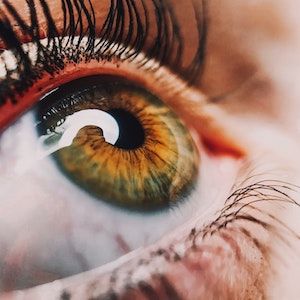News
Article
Cyclosporine Superior to Vehicle, Improves Corneal Staining in Dry Eye Disease
Author(s):
A water-free cyclosporine ophthalmic solution (SHR8028) more effectively improved total corneal fluorescein staining versus vehicle, but showed no superiority in dryness score, in phase 3 findings.
Credit: Unsplash/Perchek Industries

A water-free cyclosporine ophthalmic solution, 0.1% (SHR8028) exhibited superiority over vehicle in improving total corneal fluorescein staining (tCFS), but not dryness score, at day 29 among patients with dry eye disease (DED).1
The randomized multicenter, double-blind, phase 3 clinical trial was conducted from March 2021 to July 2022 across 12 hospitals in China.
“In this randomized clinical trial, water-free cyclosporine, 0.1%, effectively reduced tCFS score in Chinese participants with DED compared with vehicle,” wrote the investigative team, led by Rongmei Peng, MD, department of ophthalmology, Peking University Third Hospital.1
Cyclosporine is an effective immunosuppressant widely used for treating moderate to severe DED.2 Nevertheless, cyclosporine's highly hydrophobic nature, and large molecular weight, make it challenging for ocular drug delivery.
SHR8028 (CyclASol), from Novaliq, is a water-free cyclosporine ophthalmic formulation using a novel ocular drug delivery technology based on perfluorobutylpentane (F4H5). The US Food and Drug Administration (FDA) approved SHR8028 in May 2023.3 The F4H5 vehicle is a colorless liquid free of oils, surfactants, and preservatives, with high vapor pressure and low surface tension.
Based on positive findings from the phase 2b/3 ESSENCE-1 trial, the pivotal, phase 3 ESSENCE-2 trial in the United States evaluated the superiority of water-free cyclosporine, 0.1%, versus vehicle in individuals with moderate-to-severe DED.1 This trial in China was designed in parallel to the ESSENCE-2 trial as a bridging study for evaluating the efficacy and safety of SHR8028 in Chinese participants with DED. Primary analysis occurred in April 2022.
After a 14-day run-in period, participants were randomly assigned 1:1 to twice-daily, 1 drop of water-free cyclosporine or vehicle in a 29-day treatment period. Participants, investigators, and other study staff remained masked to assignment. After the treatment period, participants in both treatment cohorts were given the option to receive water-free cyclosporine for an additional 12 weeks.
Assessments of efficacy, safety, and tolerability for both eyes were planned across 5 visits. Primary end points consisted of changes from baseline in tCFS using the National Eye Institute (NEI) scale and a dryness score, measured on a visual analog scale (VAS) at day 29. Eligible participants had a history of DED in both eyes ≥180 days before screening and were currently using dry-eye treatments.
Study recruitment efforts screened 251 patients and recruited 206 (mean age, 47.8 years; 185 female [90%]) into the study. A total of 103 patients were enrolled in the cyclosporine and vehicle groups. At baseline, participants had a mean tCFS score of 12.2 and a mean dryness score of 73.0.
Upon analysis, on day 29, the improvements in tCFS scores from baseline were higher in the cyclosporine group compared with vehicle (–4.8 vs. –3.0; change [Δ], –1.8; 95% CI, –2.7 to –1.0; P < .001). Both groups experienced improvements in dryness scores, with a decrease of –19.2 and –15.4 points from baseline, respectively (Δ, –3.8; 95% CI, –9.2 to 1.6; P = .17).
Combining the results of the bridging study and the original ESSENCE-2 study, the pooled analysis revealed significantly greater improvement in tCFS score with cyclosporine treatment compared with vehicle (Δ, –0.7; 95% CI, –1.1 to –0.3; P <>001). Safety analyses identified treatment-related adverse events in 15 participants (14.6%) in the cyclosporine group and 11 (10.7%) in the vehicle group, with the most common being reduced visual acuity.
In an accompanying editorial, Michelle K. Rhee, MD, Icahn School of Medicine at Mount Sinai, noted that while numerous similarities exist between this study and ESSENCE-2, it is important to note that the pooled data analysis was performed under the assumption the efficacy of the novel drug was equivalent between the US- and Chinese-based populations.4
“This assumption may not be entirely valid, given the data revealing a more pronounced between-group difference in mean change in tCFS, a primary outcome measure, in the Peng et al study as compared to the ESSENCE-2 study (a demonstrable change of −1.8 vs −0.4),” Rhee wrote.
References
- Peng R, Jie Y, Long Q, et al. Water-Free Cyclosporine Ophthalmic Solution vs Vehicle for Dry Eye Disease: A Randomized Clinical Trial. JAMA Ophthalmol. Published online March 07, 2024. doi:10.1001/jamaophthalmol.2024.0101
- Akpek EK, Wirta DL, Downing JE, et al. Efficacy and Safety of a Water-Free Topical Cyclosporine, 0.1%, Solution for the Treatment of Moderate to Severe Dry Eye Disease: The ESSENCE-2 Randomized Clinical Trial. JAMA Ophthalmol. 2023;141(5):459–466. doi:10.1001/jamaophthalmol.2023.0709
- Novaliq announces FDA approval of VevyeTM (cyclosporine ophthalmic solution) 0.1%, for the treatment of the signs and symptoms of dry eye disease. Novaliq. May 2023. Accessed March 7, 2024. https://www.novaliq.com/press-releases/2023/06/08/novaliq-announces-fda-approval-of-vevye-cyclosporine-ophthalmic-solution-0-1-for-the-treatment-of-the-signs-and-symptoms-of-dry-eye-disease/.
- Shah K, Rhee MK. Unraveling the Potential of Water-Free Cyclosporine in Dry Eye Disease. JAMA Ophthalmol. Published online March 07, 2024. doi:10.1001/jamaophthalmol.2024.0224





